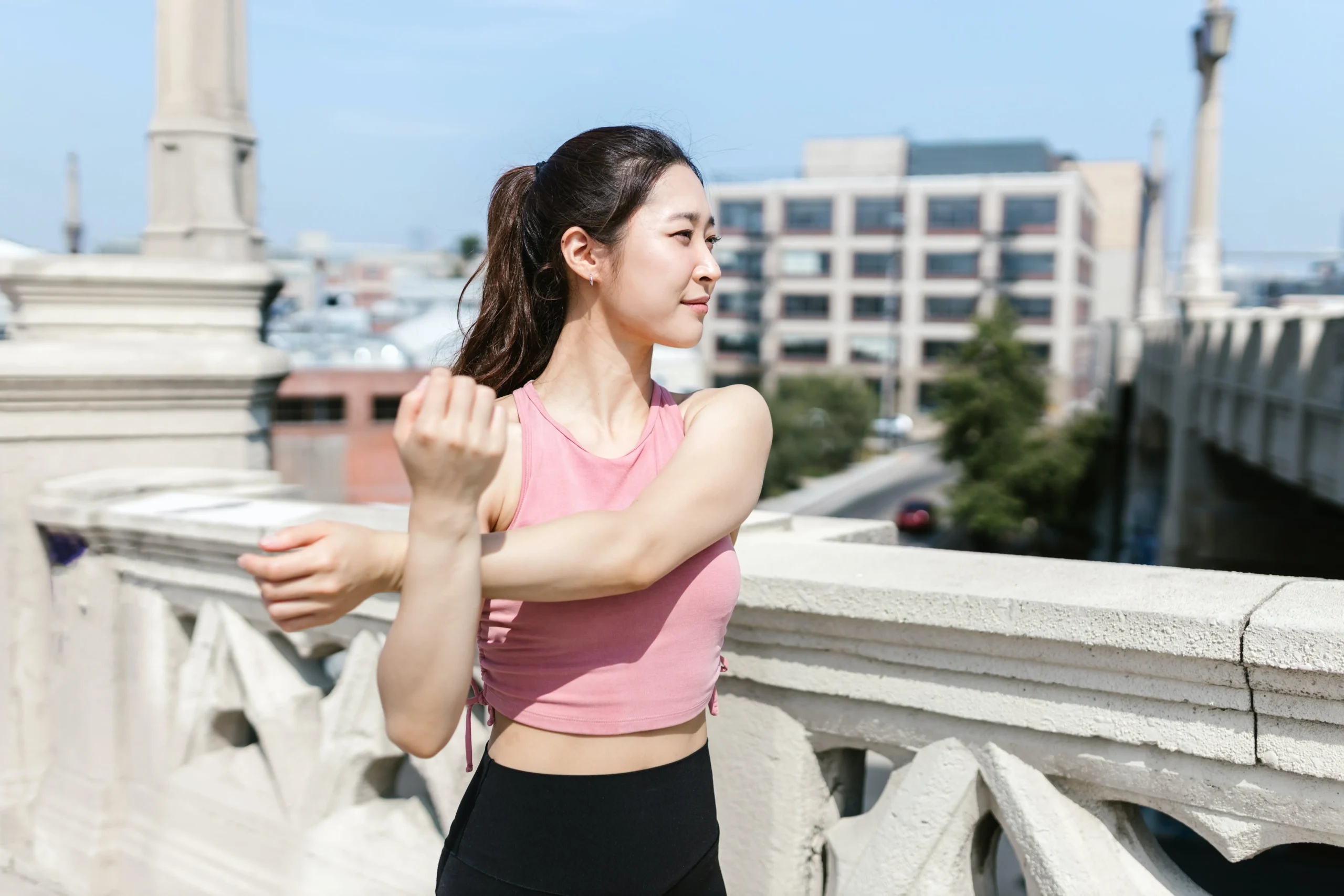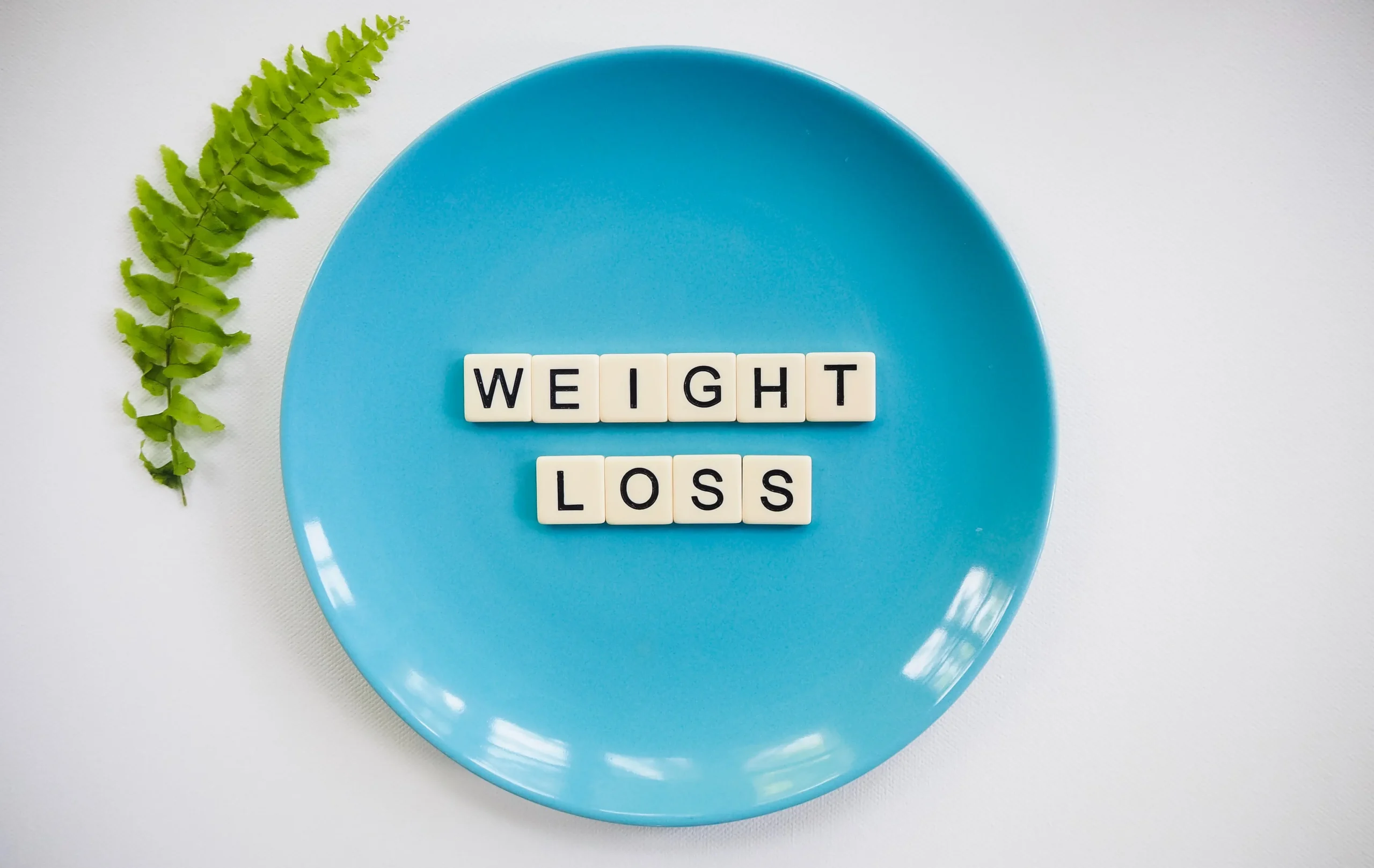Are you looking for a budget-friendly and convenient way to get in shape? Look no further than calisthenics! This form of exercise uses your body weight and requires no equipment, making it accessible to anyone. In this guide, we’ll show you how to start your calisthenics journey from the comfort of your own home, no matter your fitness level.
What Is Calisthenics?
Calisthenics is a popular form of exercise that utilizes bodyweight movements to enhance strength, flexibility, and overall fitness. It includes exercises such as push-ups, squats, lunges, and planks, which can all be performed without any equipment. This makes calisthenics a great choice for beginners as it can be done at home without the need for expensive gym equipment. Additionally, as you become stronger, the exercises can be made more challenging, allowing for progression. So, if you are seeking a convenient and efficient way to maintain your fitness, calisthenics is definitely worth considering.
Fact: Did you know that calisthenics has been around for centuries and has its roots in ancient Greece?
Why Should You Start Calisthenics?
Starting calisthenics offers numerous benefits for individuals of all fitness levels.
- Convenience: Calisthenics can be done at home without any equipment, making it accessible to everyone.
- Cost-effective: Since no equipment is required, it is a budget-friendly option compared to gym memberships or purchasing exercise equipment.
- Full-body workout: Calisthenics engages multiple muscle groups, providing a comprehensive workout that improves strength, flexibility, and cardiovascular fitness.
- Progression and scalability: Calisthenics exercises can be modified to suit individual fitness levels, allowing for progression as strength and endurance increase.
- Variety: There are numerous calisthenics exercises, such as push-ups, squats, and planks, ensuring that workouts remain interesting and engaging.
So why should you start calisthenics?
How Can You Start Calisthenics at Home?
Are you looking to start a new fitness journey at home without any equipment? Calisthenics may be the perfect solution for you! But where do you begin? In this section, we will discuss the steps you can take to start practicing calisthenics in the comfort of your own home. From assessing your current fitness level to creating a personalized workout plan, we cover all the essentials you need to know to get started on your calisthenics journey.
1. Assess Your Current Fitness Level
Assessing your current fitness level is an important first step before beginning calisthenics at home. Here’s a list of steps to help guide you through the assessment process:
- Begin with a general health check-up and consult with a healthcare professional if necessary.
- Take note of your current weight, body measurements, and any medical conditions or injuries you may have.
- Perform basic fitness tests such as push-ups, squats, planks, and a timed run or walk to determine your strength and endurance.
- Evaluate your flexibility by attempting stretches and taking note of any limitations or discomfort.
- Consider your overall lifestyle, including your activity level, diet, and sleep patterns.
Remember that everyone’s abilities and needs are different, so it’s important to be honest with yourself and set achievable goals. Start at a comfortable pace and gradually increase the intensity and complexity of your workouts. Listen to your body and take breaks when necessary. Stay committed and enjoy the journey of improving your fitness level.
2. Set Your Goals
Setting goals is crucial when embarking on a calisthenics journey. These goals will help you stay focused and motivated throughout your fitness journey. Here are some steps to help you set your goals:
- Assess your current fitness level to determine where you stand and what areas you want to improve.
- Define specific and measurable goals, such as increasing the number of push-ups or holding a plank for a longer time.
- Consider setting both short-term and long-term goals to keep yourself challenged and motivated.
- Write down your goals and keep them visible as a constant reminder.
- Regularly track your progress to see how far you’ve come and make adjustments if needed.
Incorporating these steps will help you set meaningful goals that align with your aspirations and abilities, setting you up for success in your calisthenics journey.
“When I first started calisthenics, my goal was to be able to do five consecutive pull-ups. I focused on building my upper body strength and gradually increased the number of reps each week. After months of consistent training, I finally achieved my goal. It was an incredibly rewarding experience that motivated me to set new goals and continue pushing myself in my calisthenics journey.”
3. Find a Suitable Workout Space
Finding a suitable workout space is essential when starting calisthenics at home. Here are some steps to help you create an optimal workout environment:
- Assess the available space in your home and determine where you can comfortably perform exercises.
- Clear the designated area of any obstacles or hazards that could interfere with your movements.
- If possible, choose a space with good ventilation to ensure proper airflow during your workouts and make it a comfortable and safe environment.
- Consider the flooring of the area and ensure it provides adequate support and cushioning for your exercises.
- If necessary, use mats or rugs to create a more comfortable and safe surface for your workouts.
Having a suitable workout space will allow you to effectively and safely perform calisthenics exercises.
4. Learn the Basic Calisthenics Movements
To master the fundamental calisthenics movements, simply follow these steps:
- Begin with bodyweight exercises like push-ups, squats, and planks.
- Prioritize proper form and technique to prevent injury.
- Gradually increase the difficulty of the exercises by incorporating variations or progressing to more advanced movements.
- Practice a variety of exercises that target different muscle groups, such as pull-ups for the back and lunges for the legs.
- Utilize online tutorials or workout programs for guidance on the correct execution of each movement.
5. Create a Workout Plan
Creating a workout plan is crucial when starting calisthenics at home. Here are some steps to help you get started:
- Assess your current fitness level to determine your starting point.
- Set specific and achievable goals to keep yourself motivated.
- Find a suitable workout space with enough room to move freely.
- Learn the basic calisthenics movements such as push-ups, squats, pull-ups, planks, and lunges.
- Create a workout plan that includes a combination of these exercises, focusing on different muscle groups and allowing for rest days.
Pro-tip: Gradually increase the intensity and complexity of your workouts as you progress to avoid plateauing and keep challenging your body.
What Are Some Beginner Calisthenics Exercises?
Are you looking to start a new fitness journey from the comfort of your own home? Look no further than calisthenics“ a bodyweight training technique that requires no equipment. In this section, we will cover some basic beginner calisthenics exercises that will help you build strength and endurance. From push-ups to squats to pull-ups, we will explore a variety of exercises that target different muscle groups and can be easily done at home. Let’s get started on your calisthenics journey!
1. Push-ups
Push-ups are a fundamental exercise in calisthenics that targets the chest, shoulders, triceps, and core muscles. Here is a step-by-step guide to performing this effective exercise:
- Begin in a high plank position with your hands slightly wider than shoulder-width apart and your feet together.
- Engage your core and maintain a straight line from head to heels.
- Lower your body by bending your elbows, keeping them close to your sides.
- Continue lowering until your chest grazes or lightly touches the ground.
- Push through your hands to extend your arms and return to the starting position.
For beginners, push-ups can be modified by performing them on your knees or against a wall. As you progress, aim to increase the number of reps or try more challenging variations such as diamond push-ups or decline push-ups. Remember to always maintain proper form and listen to your body to avoid injury.
2. Squats
To perform squats in calisthenics, follow these steps:
- Stand with your feet shoulder-width apart.
- Engage your core and maintain good posture.
- Lower your body by bending at the knees and hips, as if sitting back into a chair.
- Keep your weight on your heels and your knees aligned with your toes.
- Lower until your thighs are parallel to the ground, or as low as you can comfortably go.
- Push through your heels to return to the starting position.
- Repeat for the desired number of repetitions.
True story: I started incorporating 2. I squatted into my calisthenics routine and saw significant improvements in my leg strength and overall stability. It took some time to perfect my form, but the effort was worth it. Squats have become one of my favorite exercises because of the functional benefits they provide.
3. Pull-ups
Pull-ups are a challenging yet effective exercise that targets multiple muscle groups in the upper body. To start incorporating pull-ups into your calisthenics routine, follow these steps:
- Find a sturdy bar or secure a pull-up bar at home.
- Stand underneath the bar with your hands slightly wider than shoulder-width apart, palms facing away from you.
- Hang from the bar with your arms fully extended.
- Engage your core and pull your body up towards the bar, squeezing your shoulder blades together.
- Lower yourself back down with control, fully extending your arms.
Pro-tip: If you’re unable to do a full pull-up, start with assisted variations using a resistance band or perform negative pull-ups by focusing on the lowering phase of the exercise.
4. Planks
Planks are a popular and effective calisthenics exercise that targets the core muscles. Here are the steps to correctly perform planks:
- Start by lying face down on the floor, with your forearms flat on the ground and elbows directly under your shoulders.
- Raise your body off the ground, balancing on your forearms and toes, forming a straight line from head to heels.
- Engage your core muscles and hold this position for at least 30 seconds, gradually increasing the duration as you progress.
- Be sure to maintain a straight line with your body and avoid sagging or arching your back.
- Breathe deeply throughout the exercise and focus on proper form.
Did you know that planks not only strengthen your core but also work your shoulders, arms, and glutes? Keep challenging yourself by increasing the duration of your plank holds!
5. Lunges
Lunges are a crucial exercise in calisthenics that specifically targets the lower body muscles like the glutes, quadriceps, and hamstrings. Here are the steps to correctly perform lunges:
- Begin by standing up straight with your feet hip-width apart.
- Take a step forward with one foot, ensuring that your heel touches the ground first.
- Lower your body by bending both knees until your back knee is parallel to the floor.
- Push through your front heel to return to the starting position.
- Repeat the movement with the other leg.
Incorporating lunges into your calisthenics routine can enhance leg strength, balance, and stability. As you progress, you can increase the difficulty by holding weights or performing jumping lunges.
How Can You Progress in Calisthenics?
As a beginner in calisthenics, it can be overwhelming to know where to start and how to progress in this bodyweight exercise routine. In this section, we will discuss various methods to advance your calisthenics practice without the need for any equipment. Whether you are looking to increase your repetitions, add resistance, or try different variations, we have got you covered. Get ready to take your calisthenics training to the next level!
1. Increase Repetitions
To increase repetitions in calisthenics and progress in your training, follow these steps:
- Start with a baseline: Determine how many repetitions you can currently perform for a specific exercise.
- Gradually increase the number of repetitions: Aim to add one to two repetitions each week. This gradual increase will allow your muscles to adapt and grow stronger.
- Focus on proper form: Ensure that each repetition is performed with the correct form and technique to maximize effectiveness and prevent injuries.
- Rest and recover: Give your muscles time to rest and recover between workouts to avoid overtraining and promote muscle growth.
- Track your progress: Keep a record of your repetitions to monitor improvement and motivate yourself to reach new milestones.
2. Add Resistance
Adding resistance is a crucial step in progressing in calisthenics and building strength. Here are some steps to effectively add resistance:
- Invest in resistance bands or weighted vests to increase the difficulty of your exercises.
- Start with lighter resistance and gradually increase as you get stronger.
- Use resistance bands for exercises like assisted pull-ups or banded squats.
- For upper body exercises, use weighted vests or backpacks filled with books or weights.
- Focus on maintaining proper form and control when incorporating resistance to avoid injury.
Remember, adding resistance allows for progressive overload, leading to muscle growth and improved performance in calisthenics. Start gradually and safely challenge yourself to see progress over time.
3. Try Different Variations
- Experiment with grip variations: Change your hand placement during exercises like pull-ups or push-ups to target different muscle groups.
- Modify leverage: Adjust the angle of your body or the position of your feet to make exercises easier or more challenging.
- Add plyometric movements: Incorporate explosive movements like jump squats or clap push-ups to increase power and speed.
- Introduce equipment: Incorporate resistance bands, parallettes, or gymnastic rings to add variety and challenge to your workouts.
- Explore advanced progressions: Once you have mastered the basic movements, try more advanced variations like muscle-ups or handstand push-ups.
In the early 19th century, calisthenics gained popularity as a form of exercise rooted in the Greek concept of Kalos sthenos, meaning “beautiful strength.” It was later adopted by the military and eventually became a staple of physical education programs worldwide.
What Are Some Tips for Starting Calisthenics?
As you embark on your calisthenics journey, it is important to remember that every individual’s fitness level and goals are unique. With that in mind, let’s discuss some general tips for starting calisthenics at home, without the need for any equipment. We cover the importance of warming up and cooling down properly, listening to your body and its limitations, and the key to success – consistency and patience. With these tips in mind, you can begin your calisthenics journey with confidence and safety.
1. Warm Up and Cool Down Properly
For a safe and effective calisthenics workout, it is crucial to properly warm up and cool down.
- Begin with a light cardiovascular activity, such as jogging or jumping jacks, to increase your heart rate and warm up your muscles.
- Next, perform dynamic stretches that target major muscle groups, such as arm circles and leg swings.
- Incorporate bodyweight exercises that mimic the movements you will be doing during your workout but at a lower intensity.
- After your workout, gradually cool down your body by performing static stretches and holding each stretch for 15-30 seconds.
- Include deep breathing exercises to help relax your body and bring your heart rate back to normal.
2. Listen to Your Body
Listening to your body is crucial when starting calisthenics to prevent injury and promote long-term progress. Here are some steps to follow:
- Pay attention to pain or discomfort: If you experience sharp pain or discomfort during a movement, stop and assess if it’s safe to continue.
- Modify exercises: If a particular exercise feels too challenging or causes strain, modify it to a variation that suits your current fitness level.
- Rest and recover: Allow your body enough time to rest and recover between workouts to avoid overtraining and promote muscle growth.
- Monitor fatigue levels: If you feel excessively fatigued or lacking energy, consider taking a day off or reducing the intensity of your workouts.
- Stay hydrated and nourished: Listen to your body’s signals for thirst and hunger, and provide it with adequate hydration and nutrition to support your calisthenics practice.
3. Stay Consistent and Patient
Staying consistent and patient is crucial when starting calisthenics at home. Follow these steps to maintain your progress:
- Set realistic goals and establish a workout schedule that you can stick to.
- Track your progress to stay motivated and celebrate small achievements.
- Listen to your body and prioritize rest and recovery to prevent injuries.
- Stay consistent with your workouts, even on days when you don’t feel motivated.
- Be patient and understand that progress takes time. Don’t get discouraged by slow results.
Frequently Asked Questions
What is calisthenics and how can I start practicing it at home?
Calisthenics is a form of exercise that uses bodyweight movements to build strength, endurance, and flexibility. To start practicing it at home, you can follow these simple steps:
- Begin by setting a goal and determining what you want to achieve through calisthenics.
- Research and learn about different calisthenics exercises and techniques.
- Create a workout plan that includes a variety of exercises targeting different muscle groups.
- Find a suitable space at home to perform the exercises, such as a living room, backyard, or garage.
- Start with basic exercises and gradually increase the difficulty as you progress.
- Don’t forget to warm up and cool down before and after each workout.
Do I need any equipment to start calisthenics at home as a beginner?
No, you do not need any equipment to start calisthenics at home as a beginner. Bodyweight exercises are the foundation of calisthenics and can be done without any equipment. As a beginner, you can focus on perfecting these exercises before adding equipment.
Is it possible to build muscle with calisthenics at home without using any equipment?
Yes, it is possible to build muscle with calisthenics at home without using any equipment. Calisthenics exercises use body weight and gravity to create resistance, which can effectively build and strengthen muscles. By gradually increasing the difficulty of your exercises, you can continue to challenge your muscles and see results.



